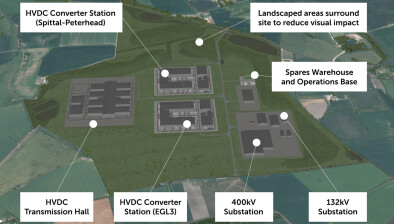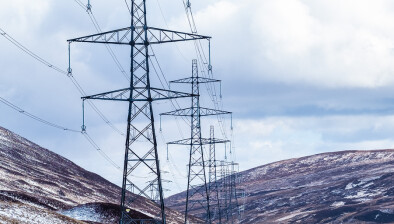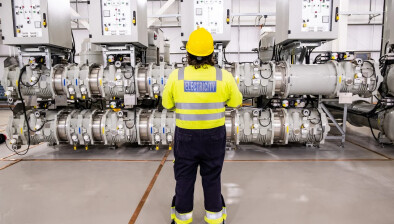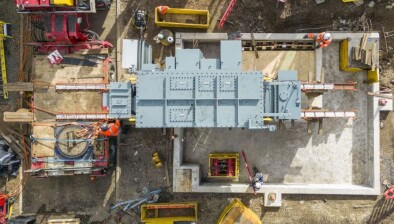SSE wins £130m damages claim against contractor over hydroelectric scheme tunnel collapse

Perth-based energy giant SSE, which was seeking £130 million in damages from an engineering contractor following the collapse of a tunnel at a Fort Augustus hydro-electric scheme nearly a decade ago, has won its appeal over the affair.
By a majority of two-to-one, the Inner House of the Court of Session allowed a reclaiming motion by Scottish & Southern Energy (SSE) Generation against a Commercial Court ruling that Hochtief Solutions AG was not liable for the collapse at the Glendoe scheme in 2009, although the commercial judge at that stage had awarded £1 million to SSE to reflect the period during which the electricity generation scheme was out of operation.
The Lord President, Lord Carloway, sitting with Lord Menzies and Lord Glennie, heard that the Glendoe scheme, which was constructed between 2006 and 2008, was the biggest to be built in Scotland for many years.
It began operating in January 2009, but just seven months later it ceased to generate electricity.
SSE discovered that rock material had fallen into the tunnel over several months, leading to a complete blockage.
Having lost substantial amounts of revenue while the scheme was out of commission, SSE asked Hochtief to carry out the remedial works, but the two parties were unable to reach agreement about who should pay.
A dispute arose about whether the collapse was as a result of a defect in the design or in the construction.
In consequence, SSE instructed another engineering company, Royal BAM Group, to undertake the works, which took much longer to complete and cost far more than expected.
The scheme did not begin to generate electricity again until August 2012.
SSE sought to recover the £130m costs involved in the remedial works from Hochtief, the defenders, relying on various provisions in the contract to try to establish liability.
In its defence Hochtief contended that it had completed the works in accordance with the contract, and that SSE had assumed the risk of the collapse at takeover.
The collapse had occurred in a part of the tunnel that lay in a geological area known as the Conagleann Fault Zone (CFZ); a tear in the ground caused by an ancient earthquake and is an area in which rock conditions for tunnelling could be anticipated to be difficult.
The engineering geologists had been aware of the CFZ before construction began and had expected to find poor rock conditions there, but found none.
As a result they saw no reason to reinforce the tunnel perimeter in that section.
The collapse was caused by insufficient support.
Having heard the evidence of a number of experts in tunnelling construction, the commercial judge held that Hochtief was not liable, having been satisfied that the company exercised “reasonable skill and care”, but since the parties had agreed £1m as the ceiling figure for the lost income incurred by SSE, he awarded that sum.
SSE appealed, and Lord Menzies and Lord Glennie differed with the Lord President on the question of whether the collapse of the tunnel was due to a defect which existed at takeover, with Lord Glennie concluding that the defence of having used reasonable skill and care to ensure that the design complied with the works information was not available to the contractor.
In his Opinion, Lord Glennie wrote: “I consider that the collapse of the tunnel was indeed due to a defect existing at takeover. Further, I consider that that defect was not due to the contractor’s design of the works but rather to the implementation of that design.”
He added: “It follows from this, in my opinion, that the collapse of the tunnel was a contractor’s risk in terms of section 81.1 of the contract; and the defenders are liable to the pursuers for the costs of repairing the tunnel. On that basis I would allow the reclaiming motion.”
Lord Menzies stated that he found himself in complete agreement with Lord Glennie’s analysis and conclusion.
However, the Lord President considered that it could not be said that the commercial judge was “plainly wrong” in concluding that the defenders had exercised reasonable care in relation to their design of the head race part of the tunnel (HRT) and in determining, at the face, how it was to be implemented.
He said that the commercial judge had provided a chronology of events, starting with the scheme and going on to describe the contract, the construction, its collapse and the recovery project. He had provided specific sections on why the tunnel collapsed, the witnesses and burden of proof, whether (in relation to the works information or the design) there was a defect at takeover and the exercise of reasonable skill and care.
Lord Carloway added: “In each of these sections the reasoning of the commercial judge is generally clear and concise. It leaves the reader in no doubt about what his reasons for reaching a particular view were. That is not to say that the reasoning is as clear as it might have been on all the points raised, or that it might have been more expansive in certain areas, but it meets the legal test.”














